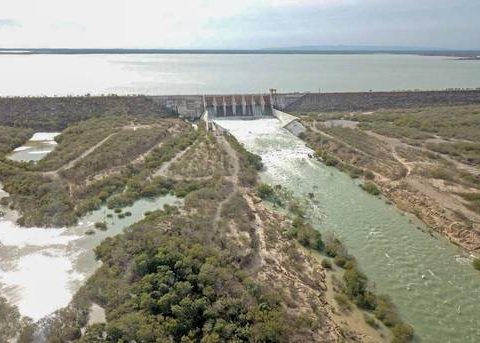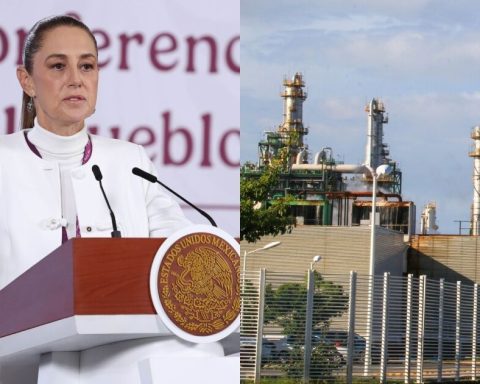And also state times collide
For nine of the 32 entities in the country, the term to adapt their local laws to “Plan B” is only three months, that is, May, so that the changes can be in force for their local electoral processes to renew governorships, which begin in September 2023.
The changes ordered by “Plan B” will also be made at the local level in matters such as organization of elections, calculation of results, registration of candidacies at the local level, gender parity, applications for minorities, and will modify the structures of Local Public Bodies Electoral Courts (OPLS) and will have an impact on local electoral justice and on the way of working of the local Electoral Tribunals.
However, when the states reform their legal frameworks and begin preparations for their local elections, the national restructuring of the INE will not yet be ready –which could impact the district councils located in their territories– and the professional service personnel assigned to their OPLS, since the reform ordered to unify them with the national SPEN.
The nineteenth transitory of “Plan B” indicates that the Congresses of the 32 entities will adapt their secondary legislation to “Plan B” before ninety days from the start of PEF 2024, that is, no later than the third week of August.
But he did not foresee that nine entities have local elections the same year and their processes begin in September and not in November like the federal election.
And for the entities, article 105 of the Constitution also applies, which orders that any legal reform that impacts the elections must be carried out no later than 90 days before the start of their respective local electoral processes.
The nine states with local elections in 2024 to elect the heads of the local Executive Power are Mexico City, Chiapas, Guanajuato, Jalisco, Morelos, Puebla, Tabasco, Veracruz and Yucatán, whose local legal reforms should be no later than May .
(Special)
In addition, the fourth transitory establishes that the decree “will not be applicable in the electoral processes of the State of Mexico and Coahuila in 2023”, since there are local elections in progress.
But Plan B will modify decentralized bodies of the INE -district councils and local boards in addition to creating auxiliary offices- and the first two are currently organizing local elections.
But at the same time that they operate, according to the reforms, they have a deadline to transform on August 15, when it is foreseeable that there will still be challenges in both entities, since they will still be in the middle of their electoral processes.
There will be, highlighted the INE counselor José Martín Faz, “new structures that are practically non-existent in the decentralized sphere and that, without a doubt, put both the federal and local elections at risk, on the eve of the concurrent elections of 2024” .
So, in the midst of a concurrent federal election with elections in 9 states, “a model without contrasts or previous operational and empirical tests will have to be put into practice.”
national restructuring
By August 15, the comprehensive restructuring of the INE throughout the country must be ready, according to the twelfth transitional decree.
This will imply the loss of SPEN places. The aforementioned article orders that between January and May consultations will be carried out on the appropriate profiles to stay and “no later than the 1st. June” it is ordered to have the evaluation process designed.
The previous law mandated the existence of 300 District Executive Boards, each made up of five officials: an executive member, a secretary member, one from Organization, one from Training and one from the Federal Register of Electors (RFE).
“Plan B” cuts so that there are 260 permanent organs and 40 temporary ones. In all of them, those five positions disappear and there will be only one operational member who may have an assistant.
The abrogated Legipe established 32 INE Local Boards, these are maintained but the secretary and organization members are eliminated.
It is there where the bulk of the SPEN staff –2,100 out of a total of 2,571 members–, 84.6%, will be liquidated.
At all levels of the INE, it is estimated that the layoffs will amount to 6 thousand workers between those of the SPEN and those of the administrative branch, derived from compaction of areas.
In accordance with the transitory regime, staff departures from May to August must be provided, in which the liquidation and cancellation processes must also be closed for the Trust for Labor Liabilities of the organization, used for those payments.
However, the INE must have an organizational diagnosis ready beforehand that estimates the costs derived from the compensation for the termination of the employment relationship of the personnel that will be cut from the Institute.
And this without considering that, by law, he can defend his labor rights before the Electoral Tribunal of the Federal Judiciary (TEPJF), which will eventually extend the deadlines for the settlement and perhaps modify the amounts.
“No later than August 15, 2023, the local bodies and auxiliary offices must be installed in accordance with this Decree, to operate in the following electoral processes,” the transitional reform order is ordered.
For this reason, according to the president counselor, Lorenzo Córdova, “what we will have before us is the first regressive reform of our democracy and we will be in the prelude to an unprecedented pre-electoral and post-electoral uncertainty, surely, in what will be the election in 2024 largest in our history.


















